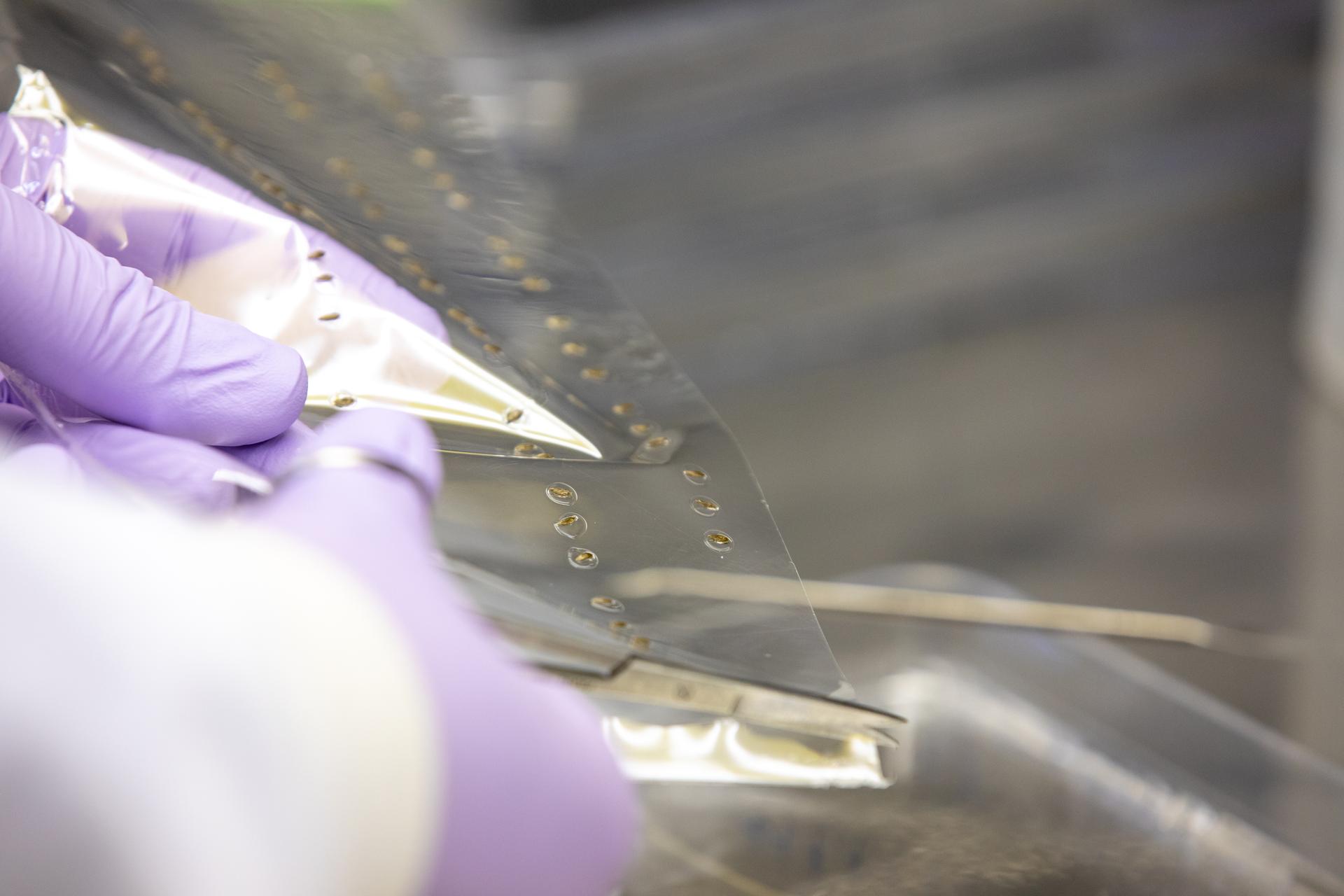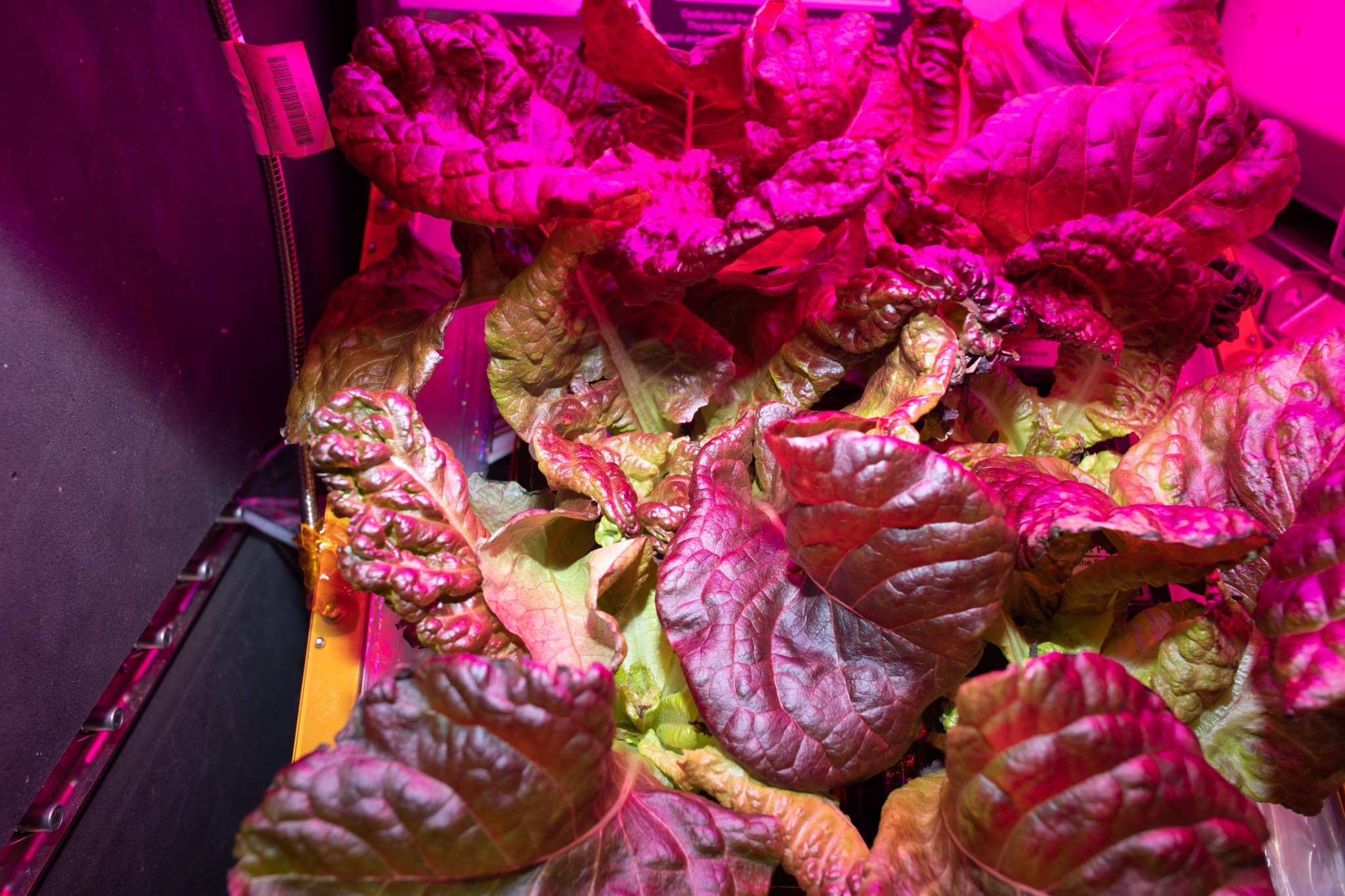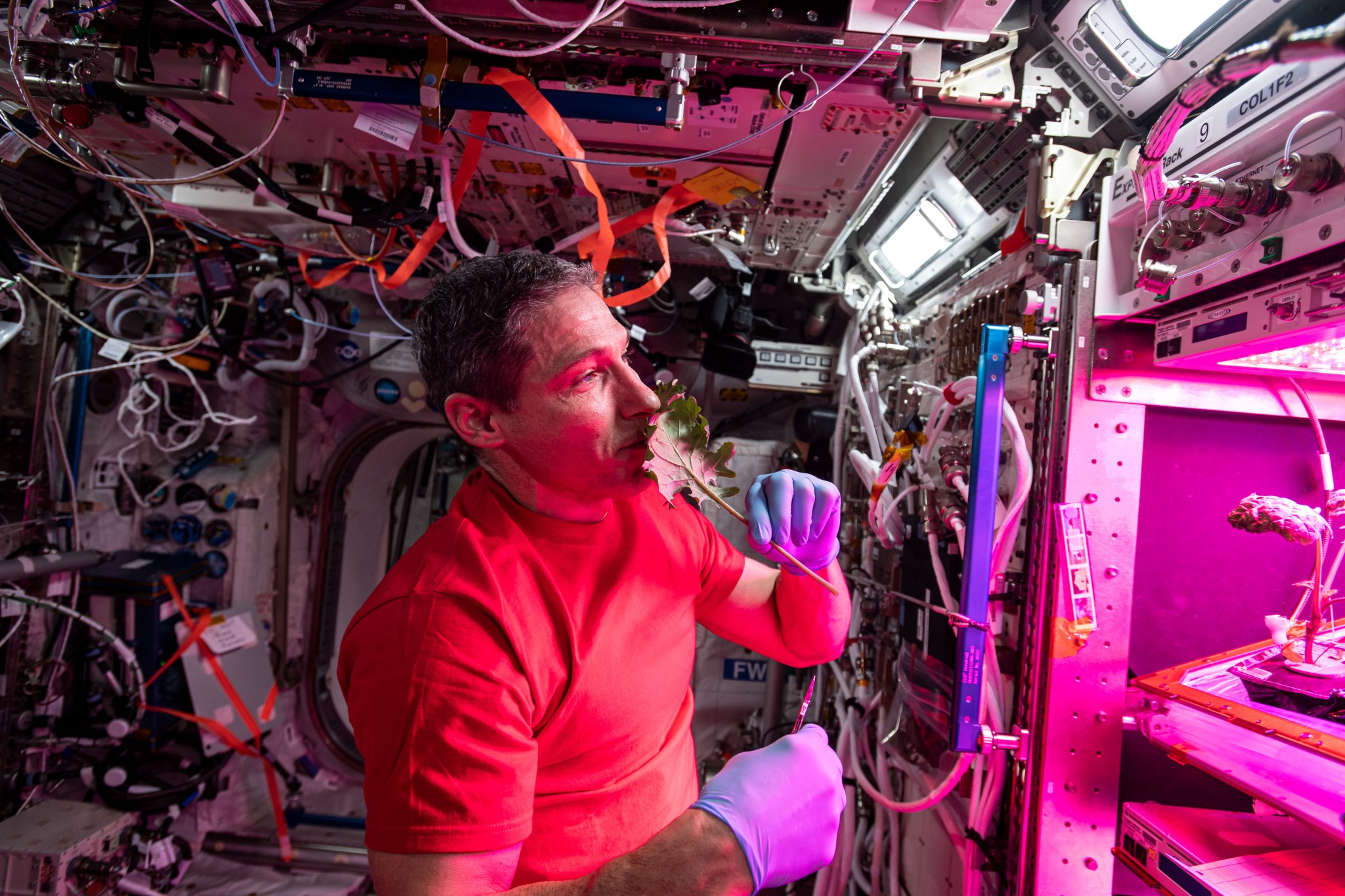NASA astronaut Michael Hopkins harvested ‘Outredgeous’ red romaine lettuce grown in the Vegetable Production System (Veggie) aboard the International Space Station on Feb. 2, 2021. This experiment, VEG-03J, demonstrated a new way of storing, handling, and planting seeds in space.
NASA is studying how to effectively grow crops in space so plants can provide supplemental nutrients to astronaut crews on long-duration missions, such as a mission to Mars.

Researchers in previous Veggie experiments planted seeds in small pouches called plant pillows while on the ground at NASA’s Kennedy Space Center in Florida. VEG-03J studied astronauts planting crops in space using a specially designed seed film. The film uses a water-soluble polymer, similar to a breath freshener strip, and aims to gives astronauts more flexibility for growing plants in space.
Normally, the research team glues seeds onto a wick and places them in the plant pillows along with controlled release fertilizer and calcined clay – one of the materials used on baseball infields to manage moisture. In this experiment, Kennedy researchers cast the seeds into the film, then cut the film into postage stamp-sized squares and packed them separately from the plant pillows. On Jan. 4, Hopkins placed the seed film squares into the wicks. After adding water to the plant pillows, the film dissolved, and the seeds germinated.
“The lettuce became established 1-2 days ahead of previous Veggie experiments aboard station, and the uniformity and overall crop size were amongst the best researchers have seen in Veggie,” said Matt Romeyn, a space crop production project scientist and science lead for the VEG-03J investigation. Samples of the lettuce will soon return to Earth for analysis to ensure they are safe to eat.
The seed film idea debuted in October 2016 at a Kennedy innovation event, where employees with promising ideas made short presentations to kick-start their projects. Romeyn presented an idea for testing microgreens for use in space. Microgreens are vegetables harvested and consumed when they are very young and packed with nutrients, which make them ideal for testing and consuming in space.

Romeyn’s idea required a way to grow mats of microgreens in microgravity, which also requires managing large amounts of planted seeds. He gathered the materials for seed film and partnered with Trent Smith, then the Veggie project manager. Smith used his polymer chemistry background to help develop the idea further. Before using it with microgreens, they decided to demonstrate seed film with a crop that had previously grown several times in Veggie.
“Surprisingly, seed film is a well-known seed-placement technology with patents spanning back to 1895, though the commercially available seed tapes didn’t meet NASA’s needs to enable astronauts to handle and plant seeds in microgravity,” said Smith, who now manages Kennedy’s Technology Transfer office.
Smith and Romeyn tested several different compositions of the film to find the right mix. In the spring of 2018, NASA intern Niki Padgett began assisting the team. She now works at Kennedy as a scientist who does life sciences processing for the International Space Station.
“I had an amazing experience as an intern,” Padgett said. “I was given the tools and full creative control to develop a method for delivering a consistent volume of water, enabling the seeds to imbed in the film while retaining their viability.”
Aaron Curry, a research scientist, assisted with the final design, addressing seed orientation and ease of use for the crew.
“The project appears simple but carries the weight of expanding options and generating flexibility for plant-based experiments in space moving forward,” Curry said. “Seed film hopefully gives current and future crew members more freedom in their dietary supplementation.”

While this experiment has been a low-cost and successful first step, NASA has more work to do to further advance the technology for future missions. Smith said seed film must be easy to handle yet stiff enough to easily insert into the Veggie pillows in microgravity. It also must dissolve away to allow the seeds to germinate while also withstanding the sanitizing and aseptic processing used to minimize possible microbial growth after planting.
“Nothing like that existed before,” Smith said. “But with some innovative thinking and using our diverse skills, we developed a solution, and this new technology will help drive space exploration.”
NASA is innovating sustainable space food systems via multiple avenues, even sourcing potential solutions outside the agency and aerospace sector. NASA’s Deep Space Food Challenge offers prize money for food system designs that can provide adequate nutrition for future long-duration mission explorers.
The Biological and Physical Sciences Division (BPS) of NASA’s Science Mission Directorate at NASA Headquarters in Washington is sponsoring the VEG-03J investigation as part of its mission to conduct research that enables human spaceflight exploration.























